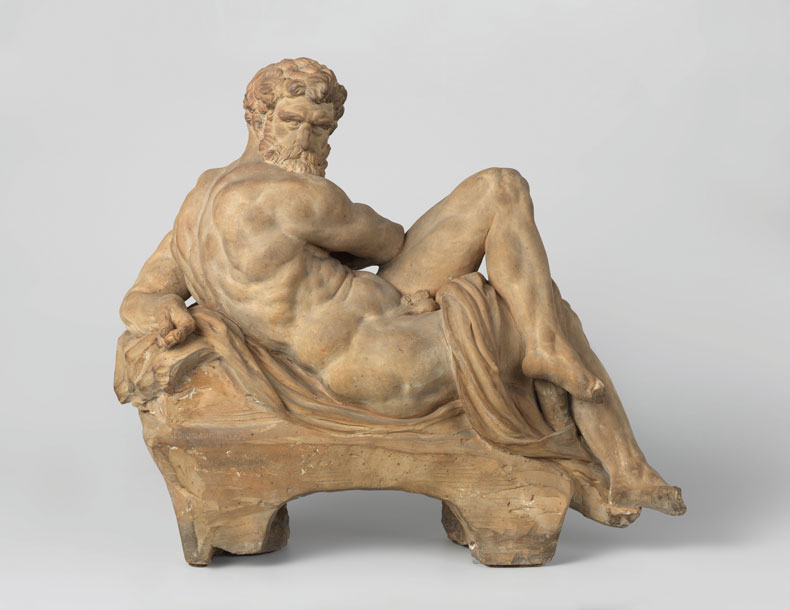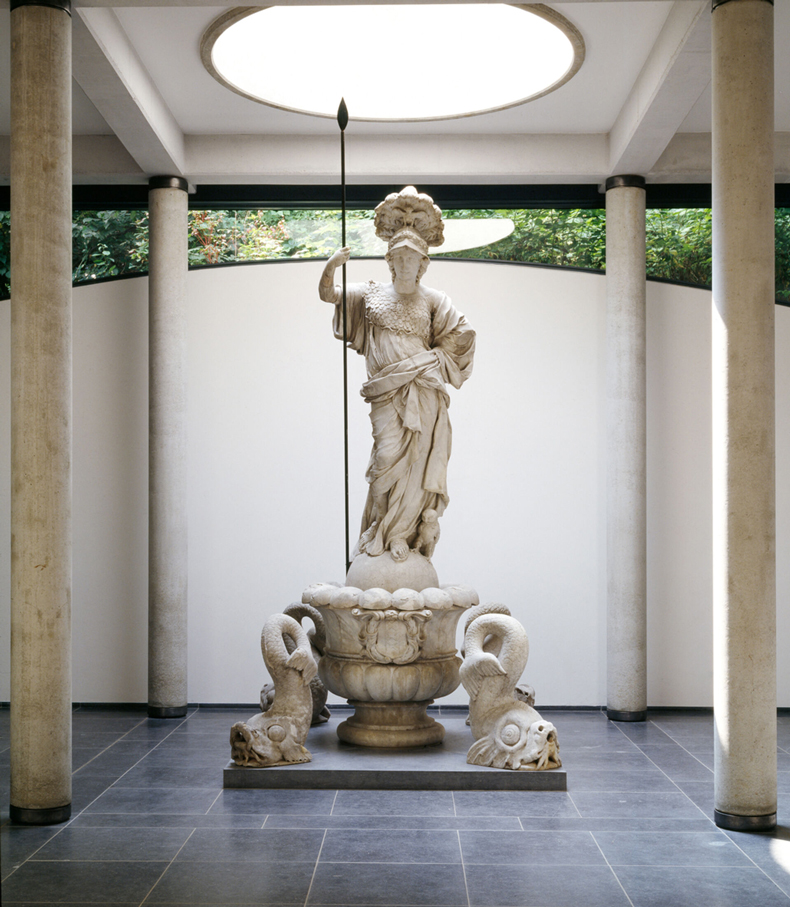From the October 2025 issue of Apollo. Preview and subscribe here.
It is a happy and rare occasion when an exhibition can be mounted in the heart of an artist’s masterpiece. Such is the case for the monographic exhibition on the Flemish sculptor Artus Quellinus (1609–68), a collaboration between Royal Palace Amsterdam and the Rijksmuseum, marking the 750th anniversary of the founding of Amsterdam, which has been arranged in the former town hall (now the Royal Palace) on the Dam Square in the city. The new republic’s prestigious civic space, for which the Antwerp-born Quellinus created sculptural decoration, became one of Europe’s most renowned marble interiors. Though less well-known than his Italian counterpart Bernini, Quellinus is considered the greatest sculptor of the Flemish and Dutch baroque, and this magnificent exhibition confirms his status.
Having trained under his father, Erasmus Quellinus, Artus developed his early career through contact with the circle of Flemish sculptors, including Lucas Faydherbe, who operated in the shadow of Peter Paul Rubens. A study trip to Rome from 1634 to 1639 brought him into close contact with another fellow Fleming, François du Quesnoy; at the same time he immersed himself in the sculpture of ancient Rome, as well as the work of Bernini, Algardi and Finelli. These influences coalesced in a classicising style inflected by a capacity to convey complex emotions, to capture the sinuous lines of heavy drapery and to evoke the softness of flesh, that echoes the paintings of Rubens, his mentor and supporter in Antwerp – a handful of Rubens’s paintings are included in the exhibition to underscore this important stylistic link. Before Quellinus’s move to Amsterdam to undertake the town hall commission, Queen Christina of Sweden had unsuccessfully tried to engage him as court sculptor in Stockholm, and he may also have worked in Lyon. In 1665 he returned to Antwerp, where his most renowned late work is a portrait bust of the governor general of the southern Netherlands, Luis de Benavides, Marquis of Caracena.

Between 1650 and 1665, working closely with the architect Jacob van Campen, Quellinus and his highly skilled workshop created in Amsterdam’s massive town hall a sculptural Gesamtkunstwerk of unmatched variety, invention and bravura. The pediments, walls and niches of the Citizens’ Hall and the flanking galleries are adorned with monumental and relief sculpture depicting the planets, the sun and moon and the four elements. These are framed by elaborate festoons, the descendants of ancient and Renaissance garlands and the ancestors of Grinling Gibbons’ wooden carvings. Facing the viewer across the hall is the seated City Maiden of Amsterdam (c. 1663–66), the world literally at her feet in the form of three marble terrestrial and celestial globes inlaid into the stone floor (the astrological globe is so worn by generations of burghers’ feet that only Scorpio’s claws remain visible). Above her, Atlas (c. 1662–63) bears the globe on his massive shoulders. As one of Europe’s most powerful trading nations, Holland saw itself as the centre of the universe and this magnificent space was intended to signal the young republic’s status and its independence from the Catholic Southern Netherlands. The city fathers could not have found a more suitable sculptor than Quellinus to manifest those intentions.
The exhibition examines Quellinus’s greatest masterpiece in situ and thematic groupings in the galleries off the central hall help to expand our knowledge of this commission and of his career. The importance of this exhibition is underlined by a number of showstopper loans, such as the Saint Peter (c. 1659) from the church of St Andrew’s in Antwerp or the monumental Fountain of Pallas Athena (1659–60) from Cleves, seen for the first time outside their original locations.

Visual connections are made between the preparatory terracotta models and the final marble sculptures, allowing the viewer to see how the spontaneity of a clay bozzetto has been maintained in the final sculpture, thanks to Quellinus’s skill at suggesting texture, movement and expression even in the intractable medium of marble. His images of mischievous putti in terracotta, ivory and marble are the heirs of those made popular by du Quesnoy, while tender animal sculptures reflect the Flemish enthusiasm for this genre. The town hall project became, in effect, the training ground for the next generation of Dutch and Flemish sculptors, and the exhibition and admirable accompanying catalogue devote considerable space to examining the work of Quellinus’s most important assistants: Bartholomeus Eggers, Rombout Verhulst and Josse de Corte. Moreover, the graphic legacy of the town hall, illustrated through a series of prints created by Artus’s brother Hubertus Quellinus, helped to disseminate his sculptural and decorative language across Europe. Surely the sculptural decoration of the great halls at Houghton, Castle Howard or Wentworth Woodhouse follows Quellinus’s exemplar, channelled through the subsequent generation of Flemish sculptors, such as Rysbrack and Scheemakers, who settled in Britain.
Finally, an honour guard of burgomasters’ portrait busts flanks the central Citizens’ Hall. Here Quellinus’s Bust of Andries de Graeff (1661) reigns supreme in its evocation of Bernini’s ‘speaking likeness’, the Finelli-like skill in evoking drapery and lace, and the energetic drill work of the wig.

Returning downstairs to the Dam Square, the visitor will pass the Tribunal, where some of Quellinus’s most affecting sculpture can be seen. Mourning caryatids, plaited hair merging with the architecture, hide their faces in shame and despair. Sculpted tableaux depict heroic biblical and classical scenes as moral exemplars for those on trial, while images of death populate the decorative friezes. The newly cleaned and regilded exterior pediment facing the Dam Square is surmounted by six massive bronze figures similarly recently restored to their rich dark patinas. The contrast between the sober Dam Square and the stupendous baroque interior decoration of the town hall contributes to the heightened sense of theatre that makes this formerly republican civic space so appropriate for the pomp and pageantry of royal occasions.
‘Artus Quellinus: Sculptor of Amsterdam’ is at the Royal Palace Amsterdam until 26 October.
From the October 2025 issue of Apollo. Preview and subscribe here.
